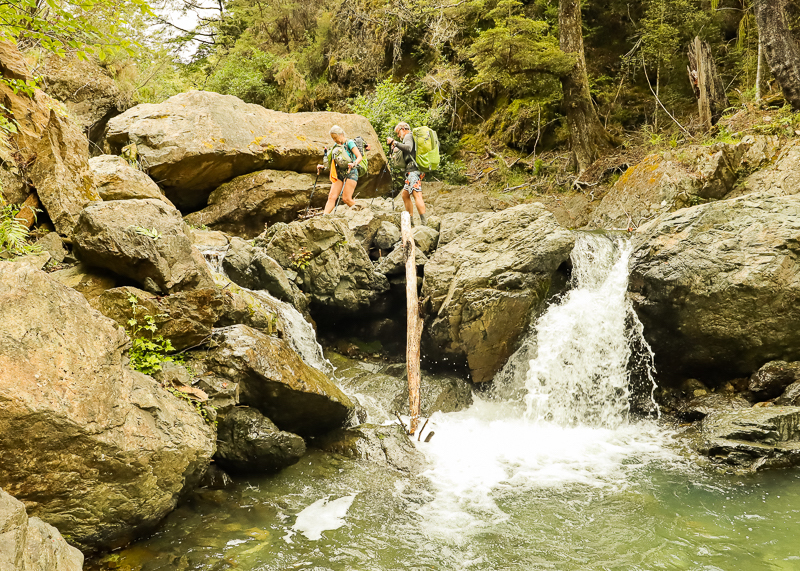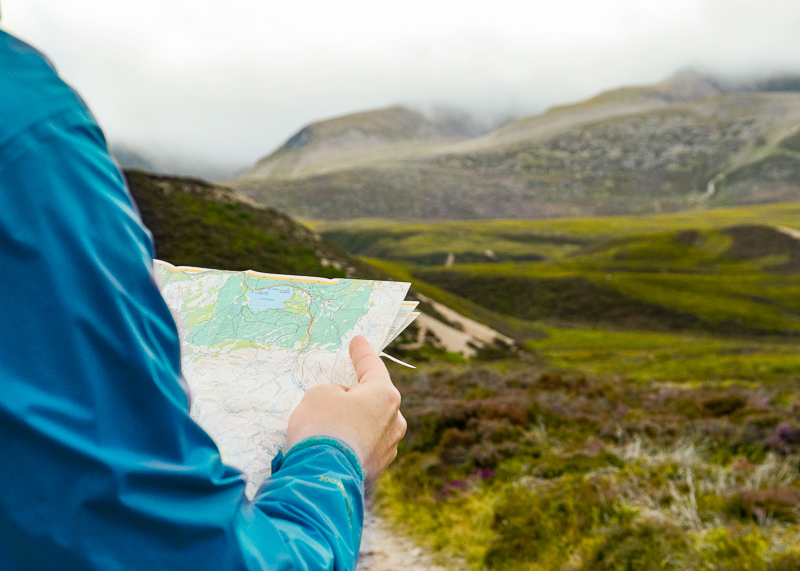Long White Gypsy uses affiliate links and is a member of the Amazon Services LLC Associates Program. If you make a purchase using one of these links, I may receive a small commission at no extra cost to you. See my Privacy Policy for more information.
New Zealand’s network of tracks and trails are often underestimated by travellers and tourists from other countries as well as beginner hikers. A recent study by Mountain Safety Council found that there is an average of 5.7 deaths every year on New Zealand’s network of tracks and trails.
Tourists and international hikers are often disproportionately represented in the numbers, such as this ill-prepared Indian hiker who separated from his group, this Czech couple whose Routeburn tramp turned into tragedy or this experienced British hiker who perished whilst on a working holiday visa.
In an effort to reduce the death toll and help keep beginners, tourists and international hikers safe on our trails, here are the most common NZ hiking hazards to avoid.
1 — Hypothermia (Weather)
Cyclones, floods, severe thunderstorms and even small tornadoes are just some of the weather events experienced in New Zealand each year. At higher elevations and in exposed terrain this weather can bring extremely strong winds, snowstorms and blizzards which in turn lead to the number one cause of death in the backcountry – hypothermia.
So why do so many people get hypothermia when hiking in NZ?
The biggest factor is wind chill from exposure to the changing weather. Many of NZ’s tracks and trails are routed through exposed areas either with no protection from forest or bush or narrow tracks along mountainous ridge lines where there is no natural shelter from the dangerous combination of heavy rain and strong winds.
Warm and wicking layers and good waterproof gear will only get you so far if you have to hike for hours in dangerously low wind chill conditions.
This is why it’s important to understand the risk factors which lead to hypothermia so you can prepare before you go, the symptoms of hypothermia so you can identify and address them early (use this resource to find out more), and always be prepared to turn around and try another day.
Suggested Clothing to Protect Against Hypothermia
Long sleeved thermal merino top (Men / Women)
Merino long johns (Men / Women)
Long sleeved polypropylene top (Men / Women)
Polypropylene long johns (Men / Women)
Waterproof rain jacket (Men / Women)
Waterproof rain trousers (Men / Women)
2 — Slips & Falls (Terrain)
We don’t call it ‘tramping’ in New Zealand for nothing. It might as well be known as ‘trudging’ or ‘beating yourself up over long distances’! Terrain varies wildly from long beaches to rugged mountains. And even easier tracks cause their fair share of incidents and injuries.
But it’s slips and falls which have the highest mortality rates.
NZ’s terrain is steep and exposed. It’s common to find yourself hiking along mountain ridges with exposed cliffs and steep drop-offs, skidding down loose gravel or scree slopes, or weaving your way through a forest of tangled roots and sucking mud.
At best, it’s easy to twist or sprain an ankle. At worst, a bad slip or fall could send you tumbling down a mountainside.
Fatigue and inexperience are two factors which disproportionately contribute to slips or falls on the trails, so get to know your limits and understand what you can handle.
If you tire easily, don’t attempt tracks which require you to hike for hours across difficult terrain. And if you’ve only really hiked through forests, don’t attempt a track which involves alpine terrain and mountain passes until you’ve built up some experience on shorter and more accessible alpine tracks first.
Don’t forget, weather has a direct effect on how slippery a track can be and might add hours to your trip. Always check the weather before you go and be prepared to turn back if necessary.
3 — River Crossings
Once you get more experienced and start to venture away from day hikes and ‘easier’ overnight trips (e.g. Great Walks) your overnight and multi-day hiking trips in the NZ backcountry will be dictated by rivers.
Rivers are one of the most fatal hiking hazards in New Zealand.
New Zealand’s vast terrain is dramatic, inhospitable and much of it uninhabited. From the peaks of towering mountains run deep scars in the landscape left by centuries of glacial and water erosion, where strong rivers now flow to the oceans.
You’ll probably have to cross at least one unbridged river on advanced tramping tracks and these river crossings can be dangerous or even fatal. Periods of heavy rain in the river’s headwaters can lead to higher river levels and faster flowing water. Riverbeds are often rocky, slippery and unstable, and in a flooded or fast flowing river there could be underwater obstacles which could cause injury.
Even experienced trampers have been swept away or drowned when attempting to cross an unsafe river. Before venturing onto advanced tracks, understand how to assess whether a river is safe to cross and learn safe crossing techniques. Find out more information about river safety tips here.

4 — Getting Lost
Another phenomenon that tops the list of NZ hiking hazards, is getting lost on the track.
Getting lost in the wilderness is not only terrifying but it can also lead to one of the other hazards either due to fatigue or bad decision making as a result of panic.
So how do trampers become lost in the first place?
- Poor Track Markings: Track markers are usually attached to trees and other natural features, which are susceptible to storms and bad weather. Markers can easily disappear from view. More remote trails may not be regularly checked by rangers to ensure all markers are still in place.
- Lack of Knowledge about Track Markers: Hikers who are new to hiking in NZ may not know the different track markers and end up following conservation or trapping routes instead of walking trails. Less experienced hikers may not be familiar with following poled or cairned routes in alpine territory (especially in bad weather).
- Fatigue: After a few hours of hiking through dense and tricky terrain it’s easy to lose focus and inadvertently walk off trail without realising.
- Panic: Once a hiker thinks they’re lost they’ll start to panic, and in their desperation to find the trail again they may become more lost.
- Fading Light: Forest tracks get darker quicker than tracks which are out in the open. If you’re not prepared with a head torch you can get caught out, especially if you start a hike later in the day.
To avoid getting lost, follow these simple tips:
- Always have a reliable form of navigation (and know how to use it)
- Always carry a Personal Locator Beacon or other emergency communication device so you can call for help if necessary
- Don’t attempt tracks that are too long or difficult for your experience level
- Always make sure you have plenty of daylight left to complete your trek (and pack a head torch just in case.
Suggested Gear to Help You if You Get Lost
Personal Locator Beacon (bare minimum)
Paper Maps & Compass (if you have the skills to use them)
GPS Device (including maps, SOS and Satellite Messenger)
Spare Battery Bank for your Phone (if you’re using electronic maps)
Headlamp or Torch (to signal emergency teams)

5 — Medical Events
A less common cause of death or injury in the backcountry is an unexpected medical event.
The following are some of the most common medical events to occur when on trail are:
Cardiac events. These can occur when a hiker attempts a track which isn’t suitable for their fitness level. But they can also occur in very fit people as a result of stress, strain or underlying heart conditions (even if previously unknown). Learn to listen to your body’s natural cues and don’t be afraid to turn back if you’re feeling unnaturally tired or weak. And always carry a PLB.
Sunstroke, Heatstroke and Dehydration. Heatstroke and dehydration can render a hiker unable to walk. As in most places around the world the most popular time to hike in New Zealand is during the summer months. But the lack of ozone layer makes the sun stronger during these months, and many of our most beautiful trails have little shelter and are exposed. Always pack plenty of sun protection (long layers, hat, sunglasses and sunscreen) and water (at least 2-3L) to prevent the risk of sun-related illness.
Waterborne diseases. Like many developed and developing countries worldwide, New Zealand has a substantial rate of giardiasis infection (despite the fact kiwi trampers love to state that water the wilderness is safe to drink). There are safer sources to drink from than others (i.e. high alpine streams are low risk, creeks running through farms are high risk). And just because a hut or campsite has a running water supply doesn’t mean it’s safe to drink – animals may have fallen into the tank and drowned thereby contaminating the water. Stomach infections in the backcountry are not only unpleasant, they can lead to dehydration which is dangerous. Always treat your drinking or cooking water before using.
Insect bites or stings for most people are just painful or irritating. However in some people an insect bite or sting could cause anaphylaxis which can be fatal. Sandflies and wasps are the biggest offenders in the NZ backcountry so carry plenty of bug repellent and if you’re concerned or at high risk of allergic reaction consider packing an Epipen.
Suggested Gear to Help You Deal with a Medical Emergency
Long sleeved sun shirt with UV protection (Men / Women)
Sun hat (ideally with neck protection)
Sunglasses / Sunscreen (UPF 50+)
Water filter
Electrolytes
Antihistamines / Epipen (talk to your doctor first)
6 — Hunters
Many kiwis get their first exposure to the wilderness as a result of hunting excursions with their family. Hunting is a popular and vital pastime with many kiwi families only able to feed themselves when meat is caught and killed by their own hand.
But hunters present their own risk in the wilderness. Over the years there have been a few unfortunate accidents where civilians or hikers have been injured or killed by stray bullets.
Although other countries have dedicated hunting seasons, hunting is possible in New Zealand almost all year round due to the variety of game animals, changeable climate and outside factors such as government-sanctioned deer culling.
‘The Roar’ is the most obvious and active hunting season being the time of year when red deer are rutting, usually between mid-late March to the end of April.
Hunting activity depends on the type of game the hunters are going after and what region you’re in. A wide range of animals are hunted in NZ, from deer and wild pigs to goats and ducks.
Get to know the predominant game animals and seasons in your local hiking area. At the very least, get into the habit of wearing high visibility clothing or gear so you’re more identifiable as a human and not a target. Don’t hike at night if it can be avoided and stick to the main tracks and trails (hunters will usually avoid these).

Final Thoughts: NZ Hiking Hazards
I hope this NZ hiking hazards article has alerted you to what to look out for if you’re planning a hiking or tramping trip in New Zealand.
In most cases, thoroughly researching your planned trail before you go will alert you to what hazards to expect so you can plan accordingly. If you’re in any doubt, contact the local DOC Visitor Centre before you head out or postpone for another time.
If you enjoyed this post about NZ hiking hazards, please take a moment to help me spread the word to other trampers and hikers by sharing it on Pinterest or social media.


